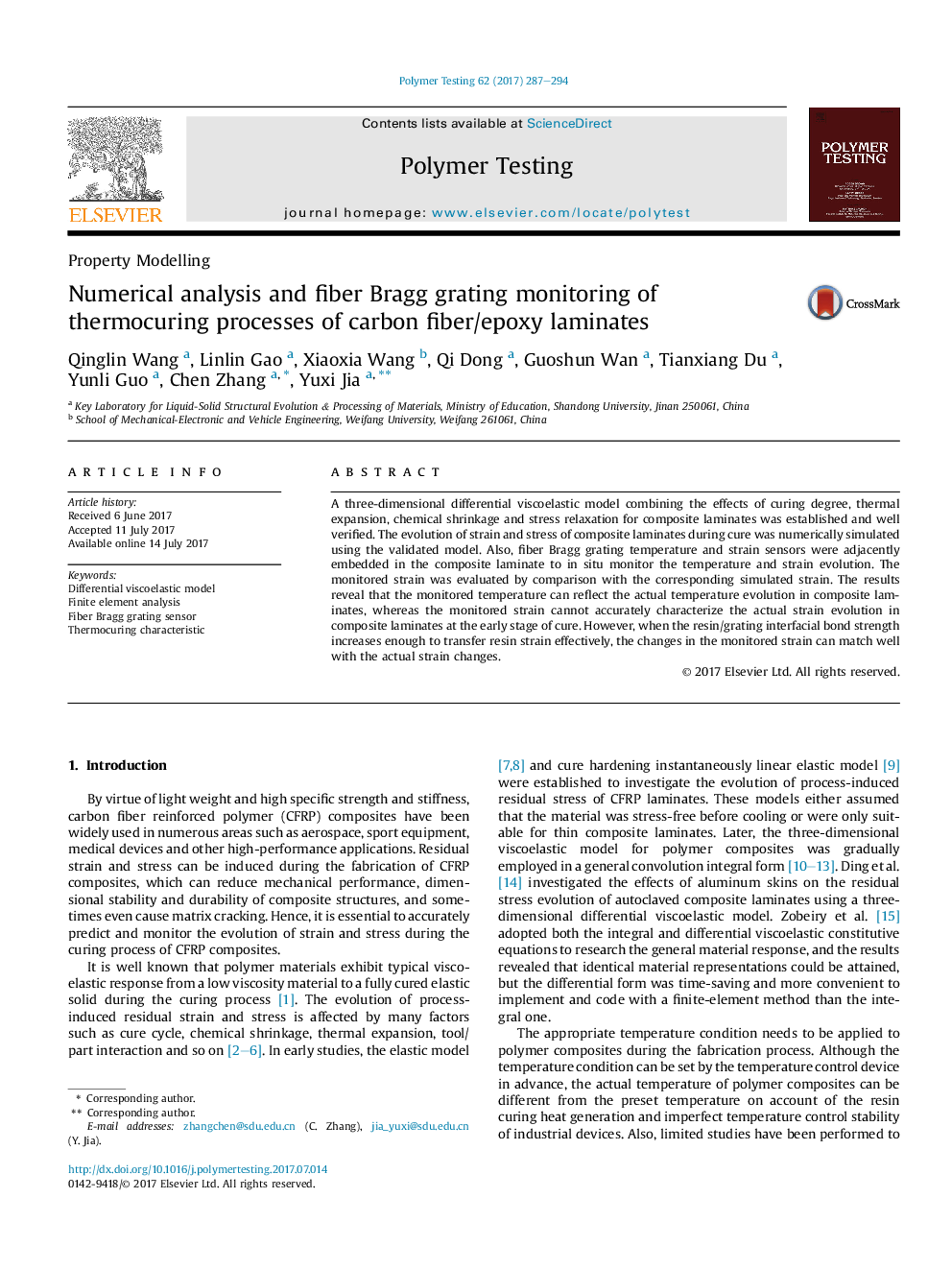| Article ID | Journal | Published Year | Pages | File Type |
|---|---|---|---|---|
| 5205392 | Polymer Testing | 2017 | 8 Pages |
Abstract
A three-dimensional differential viscoelastic model combining the effects of curing degree, thermal expansion, chemical shrinkage and stress relaxation for composite laminates was established and well verified. The evolution of strain and stress of composite laminates during cure was numerically simulated using the validated model. Also, fiber Bragg grating temperature and strain sensors were adjacently embedded in the composite laminate to in situ monitor the temperature and strain evolution. The monitored strain was evaluated by comparison with the corresponding simulated strain. The results reveal that the monitored temperature can reflect the actual temperature evolution in composite laminates, whereas the monitored strain cannot accurately characterize the actual strain evolution in composite laminates at the early stage of cure. However, when the resin/grating interfacial bond strength increases enough to transfer resin strain effectively, the changes in the monitored strain can match well with the actual strain changes.
Related Topics
Physical Sciences and Engineering
Chemistry
Organic Chemistry
Authors
Qinglin Wang, Linlin Gao, Xiaoxia Wang, Qi Dong, Guoshun Wan, Tianxiang Du, Yunli Guo, Chen Zhang, Yuxi Jia,
